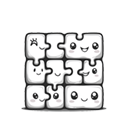Activity
Similar Activities
Enchanted Tea Party Adventure: A Magical Journey
Children’s Age: 3 years
Activity Duration: 10 – 15 minutes
Join us for a Magical Tea Party Adventure! Enhance your child's play skills, social-emotional growth, and language abilities through a whimsical tea party experience. Gather teacup…
Activity Duration: 10 – 15 minutes
Enchanted Fort Adventures: Building a Storytime Fort
Children’s Age: 4–6 years
Activity Duration: 20 minutes
Engage children aged 48 to 72 months in the "Building a Storytime Fort" activity for a creative storytelling experience. This activity promotes adaptive and cognitive development, …
Activity Duration: 20 minutes
Nature Shapes Adventure: Bird Watch & Scavenger Hunt
Children’s Age: 4–5 years
Activity Duration: 10 minutes
An outdoor activity for children aged 4-5 years combining bird watching and shape recognition.
Activity Duration: 10 minutes
Symmetry Magic: Reflective Art Adventure
Children’s Age: 7–10 years
Activity Duration: 10 – 25 minutes
This activity involves exploring symmetry through a creative and interactive art project for children aged 7-10 years.
Activity Duration: 10 – 25 minutes
Cultural Collage Creations: Exploring World Wonders Together
Children’s Age: 7–9 years
Activity Duration: 10 – 25 minutes
Let's embark on a creative journey with "Cultural Collage Creations"! This educational craft project invites children to explore diverse cultures through art. Gather supplies and c…
Activity Duration: 10 – 25 minutes
Outdoor Tea Party and Fix-it Fun for Toddlers
Children’s Age: 2–4 years
Activity Duration: 10 – 25 minutes
Let's create a fun Outdoor Tea Party and Fix-it Station for kids aged 1 to 3. Set up a table and chairs, play tea set, pretend tools, household items for fixing, a picnic blanket, …
Activity Duration: 10 – 25 minutes
Enchanted Nature Quest: The Sensory Nature Hunt
Children’s Age: 0 month – 6 years
Activity Duration: 10 minutes
Let's go on a Sensory Nature Hunt! We will use our senses to find items like pinecones, leaves, rocks, and flowers. You can bring a basket, a list of things to find, and maybe a ma…
Activity Duration: 10 minutes
Holiday Textures Sensory Exploration for Infants
Children’s Age: 0 – 3 months
Activity Duration: 5 minutes
Engage infants aged 0 to 3 months in sensory play with this holiday textures exploration activity. Use soft fabrics, textured toys, and optional holiday-scented items in a quiet, s…
Activity Duration: 5 minutes
Cultural Collage Fun: Exploring Diversity Through Art
Children’s Age: 2–3 years
Activity Duration: 15 minutes
"Cultural Collage Fun" is a creative activity designed for children aged 24 to 36 months to develop play skills, cultural awareness, and communication abilities. With magazines, ch…
Activity Duration: 15 minutes
Around the World Market Adventure: Cultural Play
Children’s Age: 11–15 years
Activity Duration: 30 – 50 minutes
Engage children in the "Around the World Market Adventure," a playful and educational activity fostering play skills and cognitive development. Set up market stations with play mon…
Activity Duration: 30 – 50 minutes

























